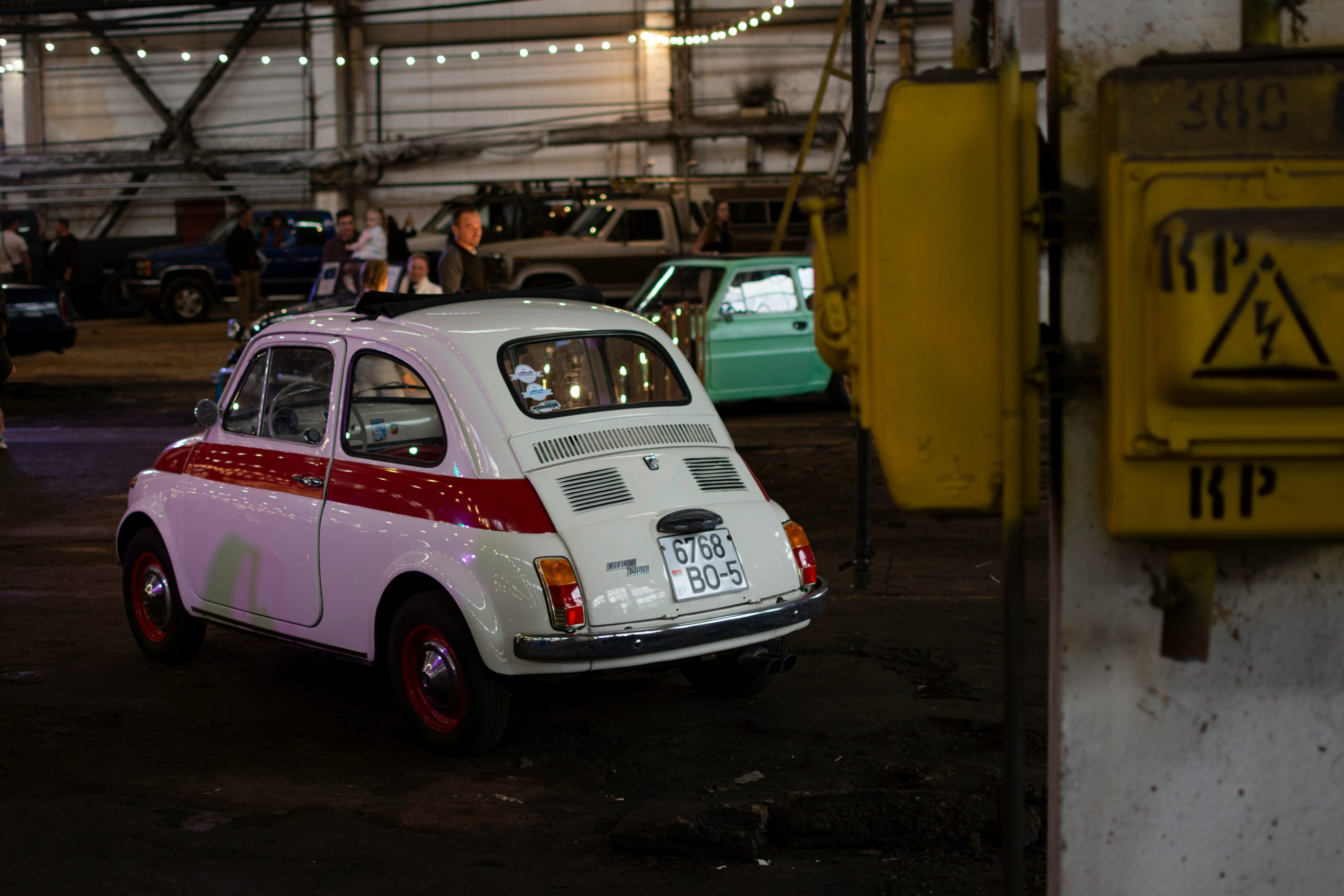1957 Fiat 500
The Fiat 500, affectionately known as the “Cinquecento,” holds a special place in automotive history as an enduring symbol of Italian innovation and style. Launched in 1957 by Fiat, Italy’s renowned automotive manufacturer based in Turin, the Fiat 500 was crafted to meet the country’s burgeoning need for economical urban transportation in the post-war era.

Designed under the creative guidance of Dante Giacosa, the Fiat 500 initially featured a modest 479 cc two-cylinder engine. This engine size was chosen for its efficient performance, perfectly suited for navigating Italy’s narrow city streets and bustling urban environments. Over time, as automotive technology advanced, subsequent models of the Fiat 500 saw enhancements in engine capacity and power while maintaining the car’s compact dimensions and emphasis on fuel efficiency.
The Fiat 500’s design is distinguished by its iconic silhouette and minimalist aesthetics, which contributed to its immediate recognition and popularity. Its compact size and lightweight construction not only made it exceptionally maneuverable but also facilitated easy parking in densely packed city centers. The addition of an optional canvas roof provided drivers with a unique open-air driving experience, enhancing its appeal among urban dwellers.




Inside, despite its small external footprint, the Fiat 500 maximized interior space through intelligent design. The dashboard was designed to be straightforward yet functional, ensuring comfort and ease of use for drivers of varying sizes. The car’s rear-engine layout played a crucial role in achieving balanced weight distribution, enhancing its handling and agility on urban streets.
Beyond its practical attributes, the Fiat 500 quickly transcended its role as a mere mode of transport to become a cultural icon. It symbolized Italy’s post-war economic resurgence and embodied the nation’s inherent sense of style and design. Throughout the 1960s and beyond, the Fiat 500 made notable appearances in films, music videos, and advertising campaigns, solidifying its place as a beloved icon of Italian pop culture.



In 2007, Fiat revitalized the Fiat 500 with a modern reinterpretation that paid homage to the original while integrating contemporary design elements and cutting-edge technology. This reintroduction sparked a renewed interest in the Fiat 500, appealing not only to longtime enthusiasts but also to a new generation of drivers who appreciated its retro charm and urban practicality.
In terms of market value, vintage Fiat 500 models, especially those in pristine condition or with unique historical significance, command considerable prices in today’s collector car market. Production of the modern Fiat 500 has expanded beyond Italy, with manufacturing now taking place in various European locations, ensuring its continued availability and global appeal.
In summary, the Fiat 500’s enduring appeal lies in its rich history, practical design, and significant cultural impact. It remains a cherished classic in the automotive world, embodying Italian automotive ingenuity and style while continuing to captivate enthusiasts worldwide with its timeless charm and functionality.